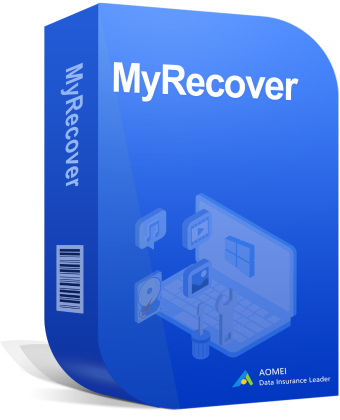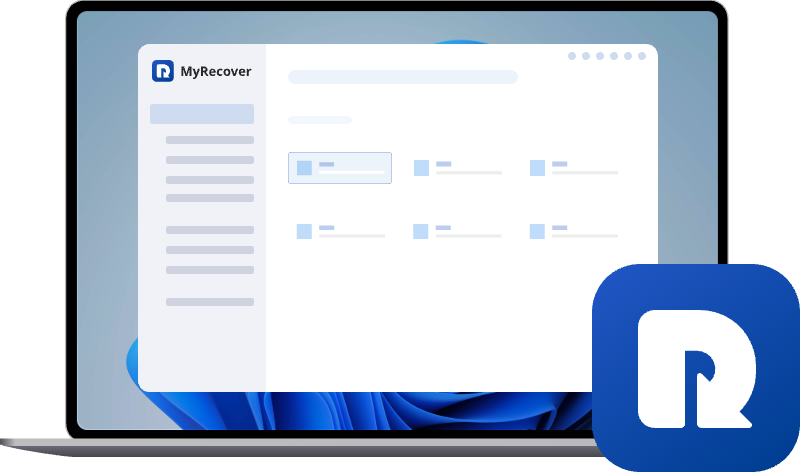Recover Data from SSD Drive Not Detected | 7 Ways
If your SSD isn’t detected, don’t panic. This guide covers how to recover data from SSD drive not detected by Windows system and recover data from SSD not detected in BIOS using reliable methods and tools.
Can I Recover Data from SSD Not Detected?
Is it possible to recover data from my dead SSD? If so, how?
Old SSD randomly not detected by Windows, as well as in BIOSand so I've upgraded to a new one. I have a lot of very valuable files on that drive that I stupidly haven't backed up. Is it at all possible for me to recover those files myself? Or is this the kind of procedure that an expert is required for?.flp files if that has any effect.
- Question from reddit.com
Why SSD drive not detected? Is there a way to recover data from a dead SSD? Don’t worry, we will walk you through the reasons and solutions to recover data from SSD drive not detected. Let’s get started.
Why SSD Drive Not Detected?
It's helpful to understand why your SSD isn't showing up before beginning recovery. There are some main reasons for SSD Drive not being detected:
⭕ Outdated firmware or drivers
⭕ Corrupted file system
⭕ BIOS/UEFI settings misconfiguration
⭕ Physical damage (rare but possible)
After getting the reasons, you might have solutions in mind to fix it. To solve it quickly, check the following solutions.
How to Fix SSD Drive Not Detected?
How to let SSD shows up in drives on your computer? Try the following solutions one by one to troubleshoot.
Way 1: Assign A Drive Letter for Your SSD Drive
Sometimes, your SSD may not show up due to the system does not assign a drive letter for it. Thus, you can try Windows' built-in Disk Management tool to assign a drive letter for the SSD drive without additional software. Here are the steps:
1. Press Win + X, then select Disk Management. Or just press Win + R, type diskmgmt.msc, and press Enter to enter Disk Management.
2. Find your SSD and see if it shows up. If it does, but has no drive letter assigned, right-click it, select Change Drive Letter and Paths, and then add a drive letter.
1. You can also right-click the SSD, select Properties, and then click Check at the Error checking field on the Tools tab to have Windows automatically fix possible disk errors.
2. Backing up data is essentials for you right now.
Way 2: Update Driver to The Latest Version
If the drivers are out-of-date or missing, Windows may not recognize your SSD. Use Device Manager to update them can fix the problem.
1. Hit Windows +X key combination to open the Device Manager.
2. Open Disk drives, and find your SSD Drive, right-click it and choose Update driver.
3. Select Search automatically for drivers and let Windows install any available updates.
Now, check if your SSD Drive is detected by Windows. If it solves the problem, back up data on SSD Drive now.
Way 3: Reboot Your Computer
Rebooting your computer can fix most of the problems, including SSD Drive not being detected in Windows. After rebooting, check if your SSD drive can be detected or not. If not, try other solutions.
Way 4: Format Your SSD Drive
If your SSD Drive shows RAW or unknown - uninitialized, etc, in Disk Management. Formatting the SSD Drive is the only option.
1. Open Windows Disk Management, right-click the SSD Drive.
2. Choose Format.
3. Rename the SSD Drive, choose the file system and other settings, and hit OK to format the SSD drive.
Then use data recovery software to recover data from SSD drive not detected.
Way 5: Check Power Supply and Connection
The simplest solution is to connect the SSD to a different port or switch out the connections to check if it’s a loose power or SATA cable problem. Try it on a separate computer if it's an external SSD. If the SSD Drive is detected by another port, connection, or computer, you can use the data again instead of recovering data from it. Keep in mind, always back up your important files in advance in case of data loss.
Way 6: Check BIOS Settings
If your SSD drive doesn't even appear in BIOS, the problem is deeper. Here’s how to recover data from SSD not detected in BIOS.
1. Restart your PC and enter BIOS (usually Del, F2, or F12).
2. Check if the SSD is listed under Storage Devices.
3. If not, try switching SATA mode from AHCI to RAID (or vice versa).
Then, ensure the SSD’s SATA port is enabled and Fast Boot is turned off to let the system recognize the SSD drive because some motherboards disable them.
Way 7: Check Physical Damage for SSD
If your SSD drive is physically damaged, especially hardware-level damage such as a burned chip or serious circuit problems, it will be difficult to read even through an adapter. At this point, a professional physical data recovery service may be the last hope.
Recover Data from SSD Drive Not Detected
If you have formatted the SSD and made it detectable by your computer, you can recover the data quickly with the powerful data recovery software- MyRecover. Why use it to recover data? It provides the following benefits:
- Highest recovery rate. You can recover data using MyRecover to enjoy the highest recovery rate in the market, 99%.
- Recover data from 500+ scenarios. Recovering data from formatted HDD/SSD, emptied trash bin, after a virus attack, and many more.
- Multiple devices supported. You can recover data from HDD, SSD, USB flash drive, external hard drive, SD card, camera devices, PS4/5, and so on.
- Precisely recovery. It allows you to recover data using different ways, such as from the trash bin, local disk, external hard drive, desktop, and more.
- Quick and deep scan. It allows you to scan the missing files from quick scan or deep scan mode. Deep scan costs more time and finds more deleted files.
- Flexible search before recovery. You can use file size and file type to find the files according to your situation.
Thus, how to recover data from SSD drive not detected with MyRecover, check the simple guide:
1. Please install MyRecover on your computer. Connect your SSD drive to your computer, and it can be detected.
2. Hit Format Recovery, select Scan when hovering over the SSD drive.
3. Waiting for the scanning to complete and hit OK.
4. Then find and select the missing files you need to recover, and hit Recover.
5. Choose another location to save the recovered files to keep them safe. Wait for the process to complete.
- Tips:
- You can upgrade to enjoy previewing before recovering to find what you need.
- Recovering data from a crashed computer is easy as long as you upgrade to MyRecover Pro or higher.

- Recover Deleted Files Easily with Simple Clicks
- 1000+ File Formats Supported
- Support HDD, SSD, External Hard Drive, USB Drive, SD Card, etc.
- Quickly Find Files Using File Types, Name, Size, etc.
- Preview Files Before Recovering
- Recover Unlimited Data
The End
Until now, you should have fixed the SSD drive not detected on your computer, and recovered data from SSD drive not detected. Besides, it’s also important to back up your files in advance in case of data loss. With a backup, you can quickly restore data from the latest backup to minimize the loss.


